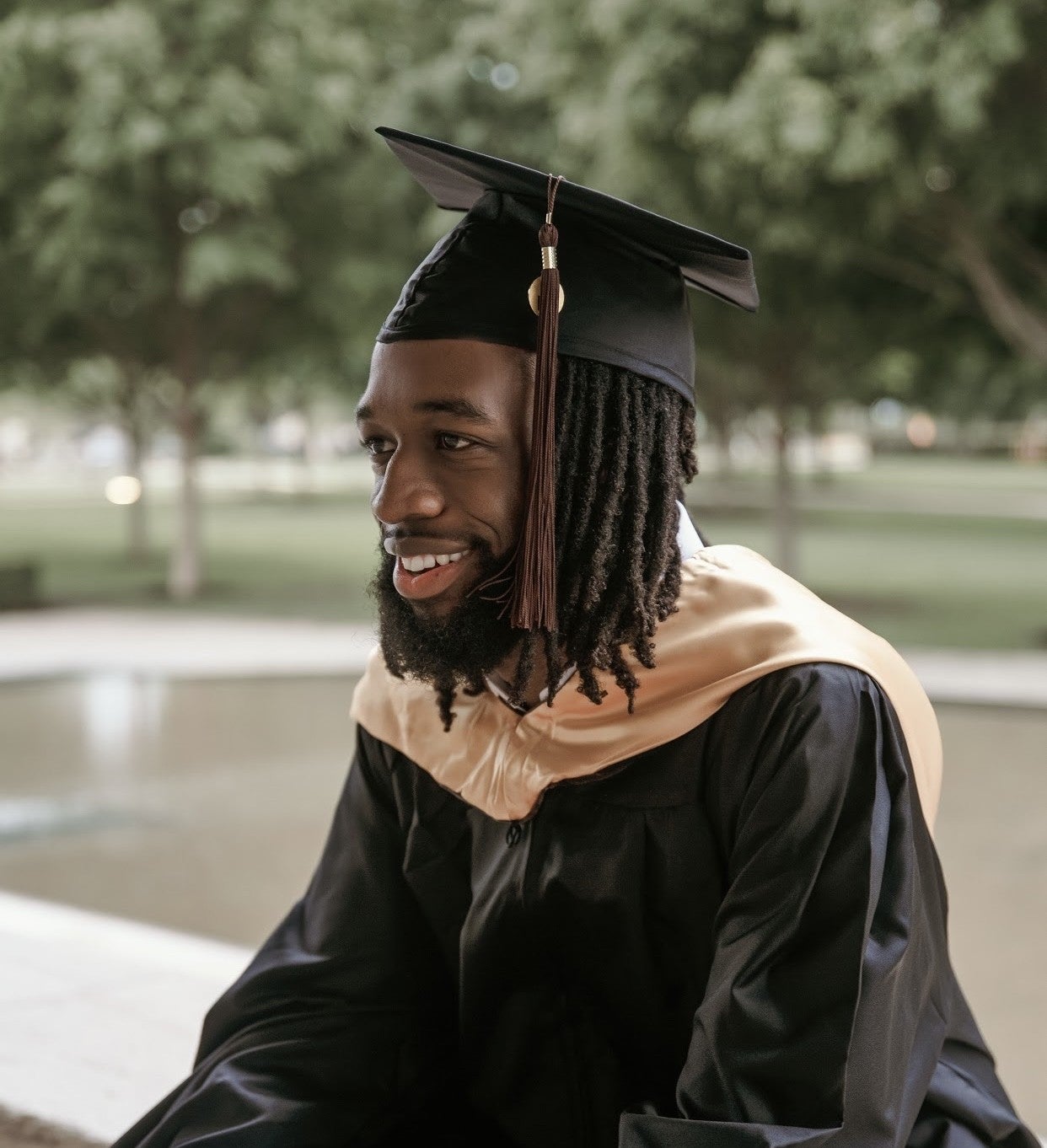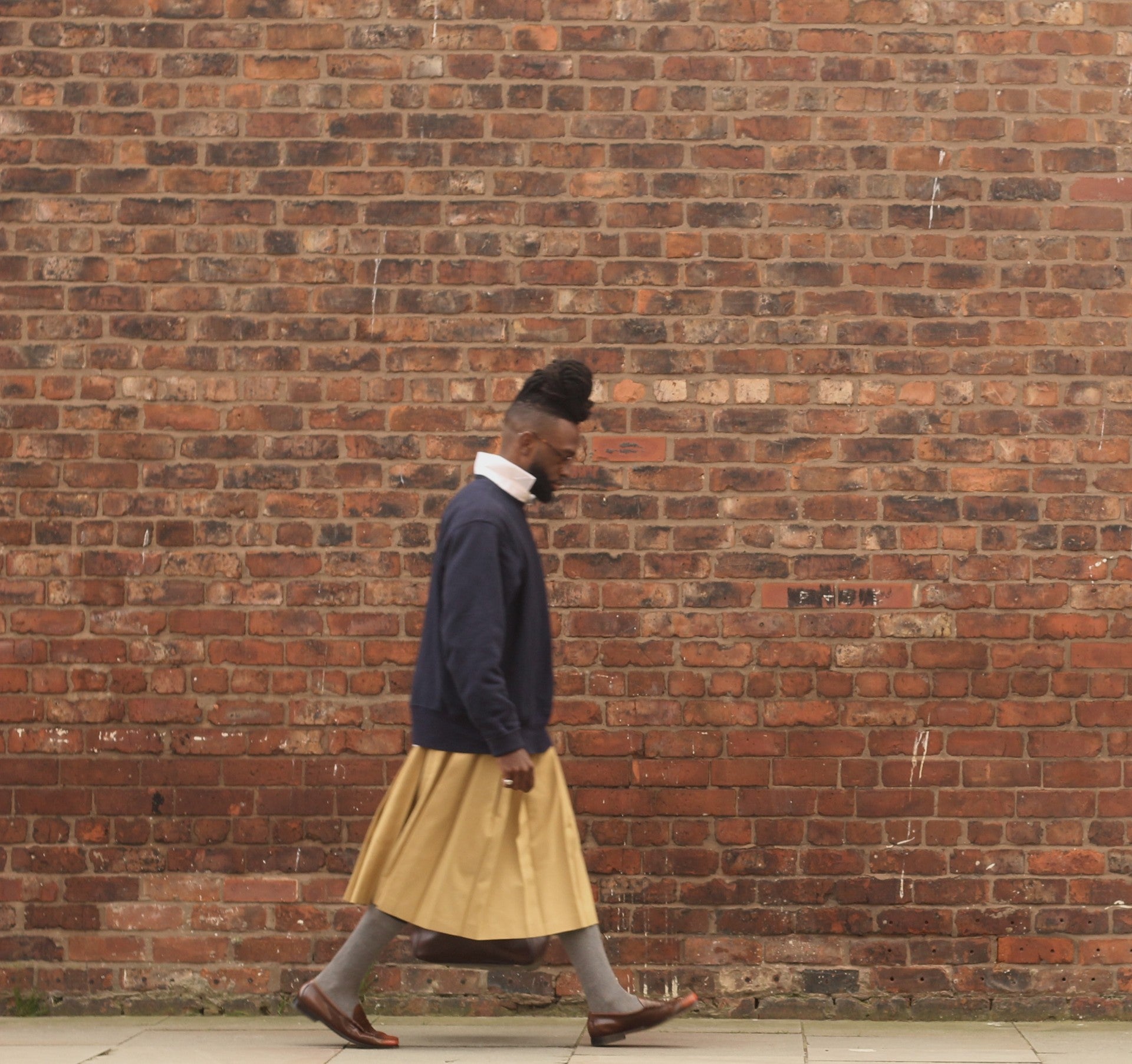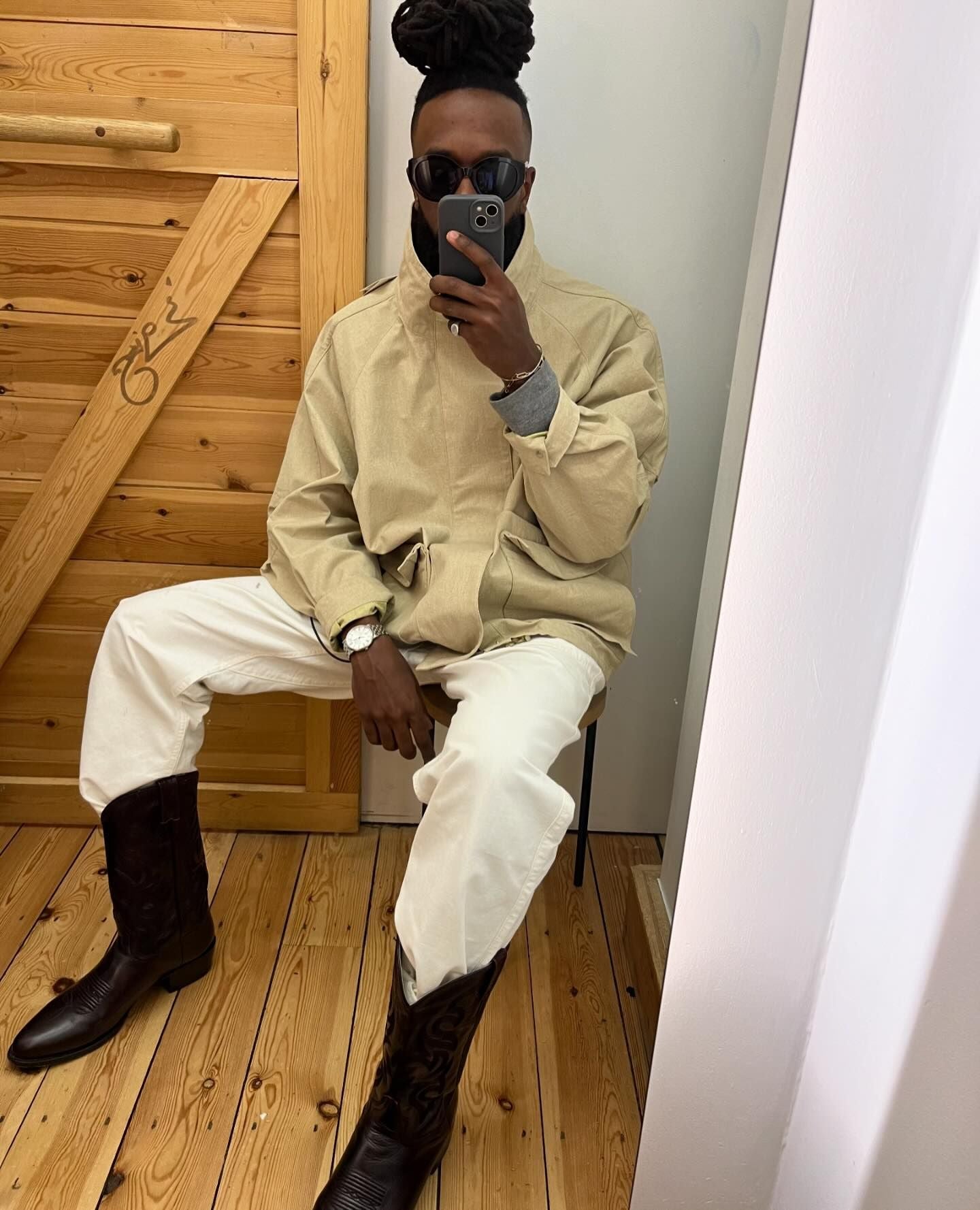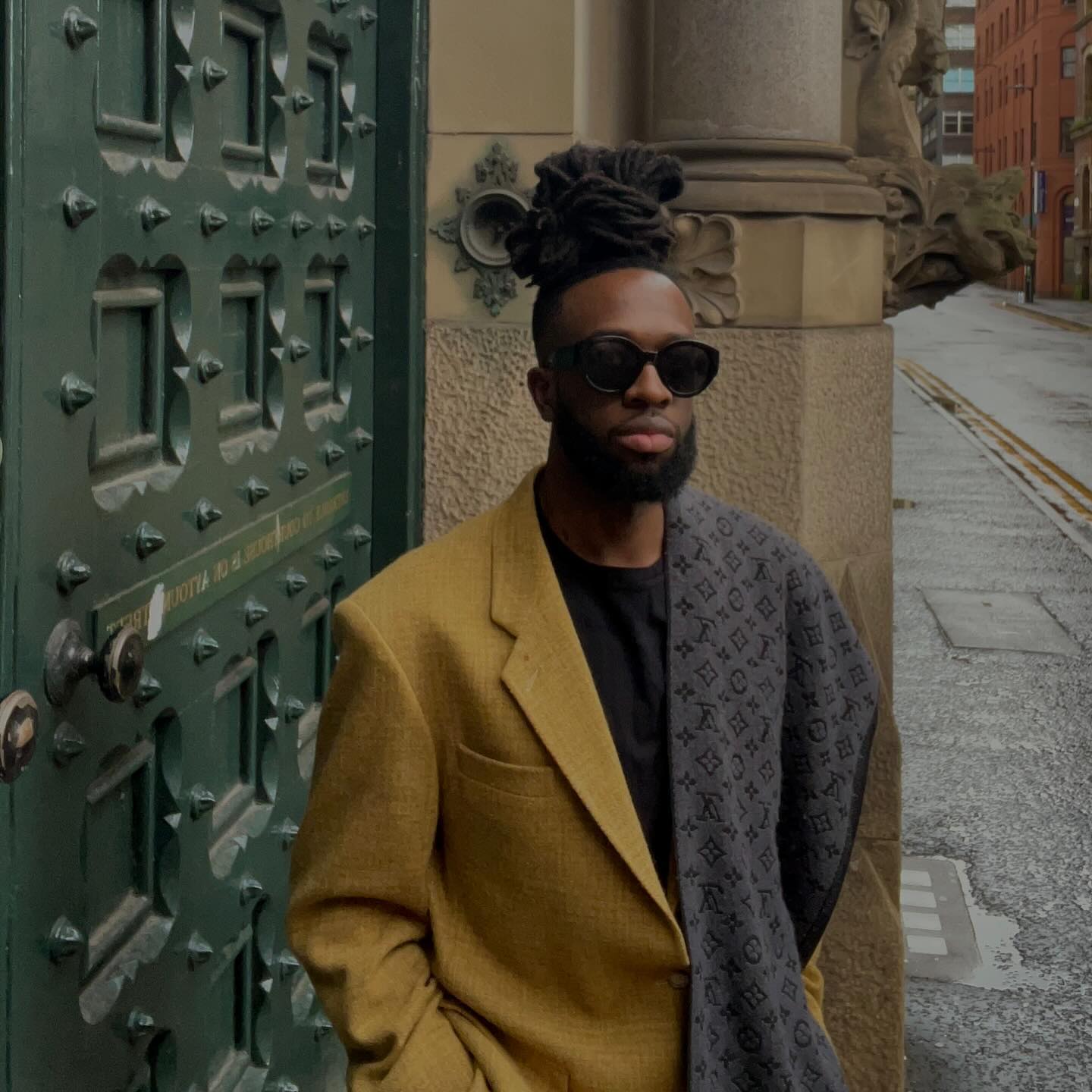
Upon moving to England, I hadn’t really thought about my Black identity beyond the American context. As I embarked on this new journey, it was important to me to make sure I owned clothes designed by Black British designers when I arrived. On the flight to Manchester, my new home, I wore a design by Nicholas Daley, who is of Scottish and Jamaican descent. The blue pleated track pants made of cotton twill with a jacquard trim along the side seams were a gift to myself for being accepted into my Ph.D. program.

Relocating to a new country for a three-plus-year stay made me think about my identity and how I fit into the world. I was curious about the experiences of Black people in the U.K. and what it means to be Black and British. While the popular tourist attractions are interesting, I was more curious about the everyday life of Black people in the country. Leaving my Texas home and heading to the airport in a Black-designed garment was, in a sense, mediation. For the first time, I was (sartorially) situating myself as part of the African diaspora. It was my cultural affirmation as I figured out what it meant to be a Black American man in this new environment.
In general, my research focuses on the clothing consumption of Black individuals. And oftentimes, when I tell people this, they’re quick to say what they think I’ll discover in my research. I always listen because curiosity is essential for scholarly work. However, their assumptions usually align with what existing literature says on the topic, which tends to be pessimistic, oversimplified, and lacking in depth. It’s all about the baggage that comes with being a Black person and the mitigative power of dress. Brothers wearing suits or Ivy League sweatshirts to project respectability and, hopefully, value. And a sister ensuring her luxury handbag is front and center to avoid any doubts as she enters first class.

It’s all true, but I’ve never believed that our relationship with fashion has always been vexed. Social realities do shape consumption and dress; “Shopping While Black” wouldn’t exist if it didn’t. But fashion, style, clothes, and adornment are also pleasure pursuits. They always were. When Black people wore their Sunday Best to take public transportation because they were denied a car for reasons known and invented, it was about squaring up to oppression and retaining agency. An example I returned to quite often in the early stages of my work is the cover of 50 Cent’s “Get Rich or Die Tryin’” album, which is a case study in the performance of Black male hedonism.
I feel compelled to challenge these notions as I develop new methods of interpreting visual information and observing my surroundings. The people, museums, galleries, and, of course, books, have influenced my understanding of fashion since I moved here. Would this have happened if I had completed my studies in the States? It’s possible, but I don’t think I would have been provoked in the same way. The knee-jerk impulse to finalize my conclusions before thoroughly exploring them is much less common here.

Two months after I settled in my Manchester flat, I attended the Africa Fashion Conference at the Victoria & Albert Museum, which accompanied the exhibition. It was one of the most nourishing and intellectually invigorating events I’d ever attended. Present were curators, artists, and scholars, some of whom dabbled in all three, and the majority were Black. Fashion designer Adebayo Oke-Lawal of Orange Culture articulated the nature of bespoke tailoring in Africa and its deep embeddedness within Nigeran culture. This was the first time I’d heard someone give an account of Black luxury without all the weight. And to see African makers’ garments in the show, displayed with the same gripping, visual astuteness as the more decorative ones, was particularly illuminating for me. (It turns out Black folks can enjoy neutrals, and it doesn’t have to mean we’re sad or assimilating or whatever!) In between presentations, a side chat with Theo Tyson, Penny Vinik Curator of Fashion Arts at Boston’s Museum of Fine Arts, led to musings over Dapper Dan’s street theory of cultural translation. It turns out our affinity for logos might also reflect our preferred aesthetic expression.

I enjoy people-watching at airports, where I’ve noticed an interesting trend. Many travelers don’t worry too much about their appearance, especially for early-morning flights. However, I’ve observed that many Black people still put effort into their airport outfits. As I helped my mom pick out her airport attire recently, I realized that this attitude might still be lingering within our community, and I hope it is. When I see Black travelers going through security and taking off their shoes, belts, and jewelry, I can’t help but notice their influence on Western fashion, particularly with streetwear. There’s a cool, casual vibe to their style that seems to be a standard for traveling and may be indigenous to our culture. On the other hand, the new and exciting clothing I’ve seen on the streets of cities like London, Paris, and Antwerp reminds us that fashion should evolve, and it is better for it.







